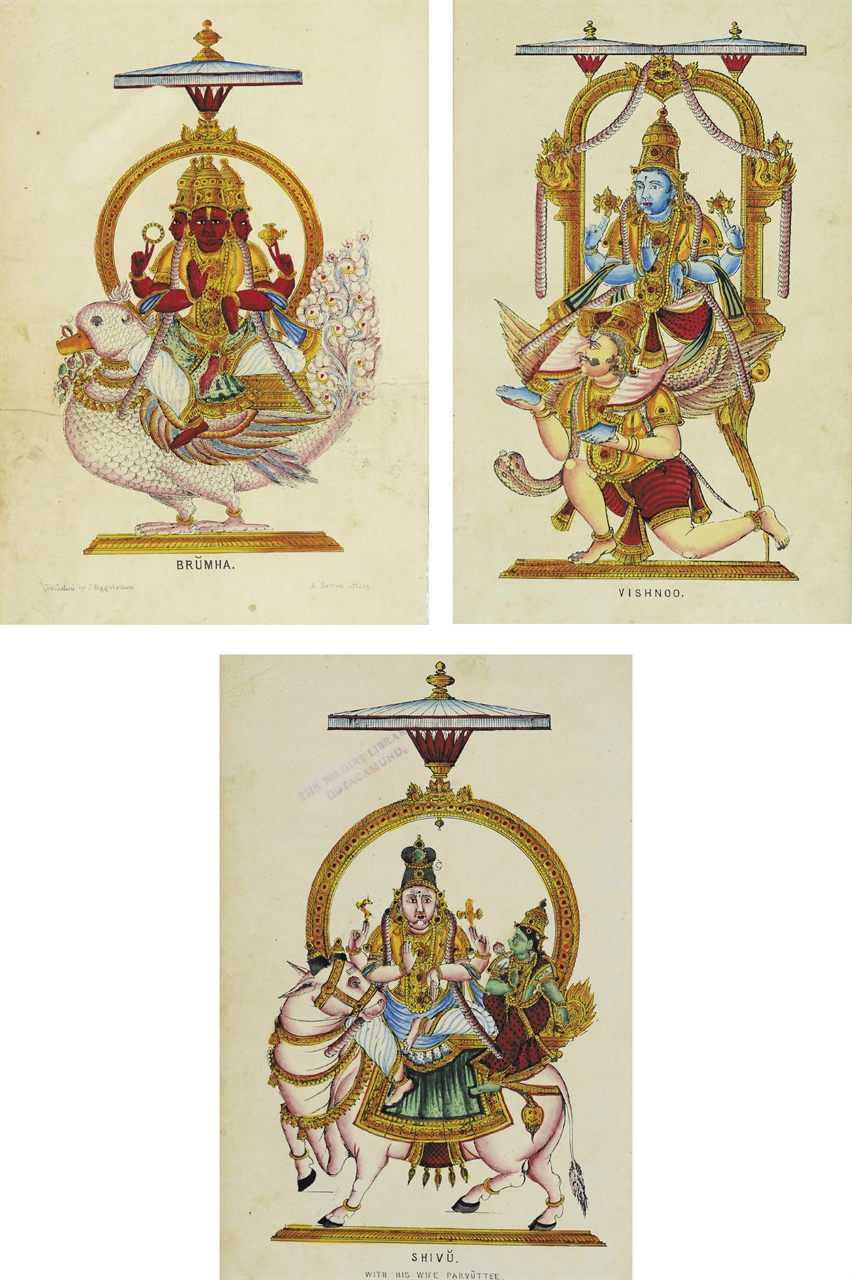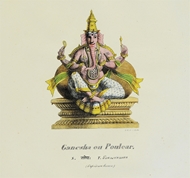![]() Antiquarian Books, Maps, Prints & Photographs - I
Antiquarian Books, Maps, Prints & Photographs - I
![]() Antiquarian Books, Maps, Prints & Photographs - I
EUG'NE BURNOUF (1801 - 1852): Brahma, Vishnu & Shiva-Parvati
Antiquarian Books, Maps, Prints & Photographs - I
EUG'NE BURNOUF (1801 - 1852): Brahma, Vishnu & Shiva-Parvati
RELATED LOTS
CONTACT US
Catalogue & Viewing
Lot Closed
Accounts & Shipping
Lot Closed
-
Details
 Details
Details
Original hand–colored lithograph of (a) BRUMHA, (b) VISHNOO and (c) SHIVU WITH HIS WIFE PARVUTTEE;
-
Literature
 Literature
Literature

Travel prints are representations of places around the world in aquatint, places around the world in aquatint, lithography and engraving. Historically they were used to document explorations and travels from the mid–18th century on, and were pictorial mementoes of countries, districts, people and events abroad. From early expeditions, particularly when Captain Cook took William Hodges (1744–97) as official artist on his second voyage to the Pacific, (between 1772 and 1775), the concept of recording the experiences of voyagers and exploiting a wider market through prints became a standard accompaniment to exploration. Some of these mementoes were met with a special eye back home. The early 19th–century attitude was nearly summed up in words of the keeper of the Royal Academy, Henry Fuseli: they were merely ‘A tame delineation of a given spot, what is commonly called views’. A very different attitude is reflected in today’s market. Travel prints are becoming increasingly collectable and are gaining ascendancy in the eyes of print dealers around the world.
As travel became easier and more areas more accessible so the case with which prints were actually produced, in the form of lithography and steel engraving, increased tenfold in the 19th century. But which areas are desirable to modern buyers? Those countries which were popular in, say, the first ten years of the 19th century are not necessarily so today. The topographical market can be divided into six major fields; The Americas, Australia, Africa, Europe, India and Asia. Most popular are the Americans, Australia and parts of Europe, Particularly Germany and Switzerland. Perhaps surprising old colonial nostalgia counts for less than those countries and areas which are actually rich or poor at present.

